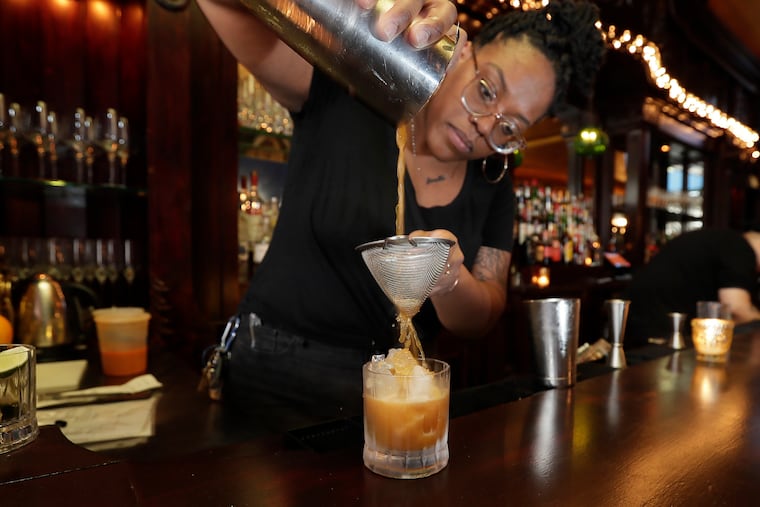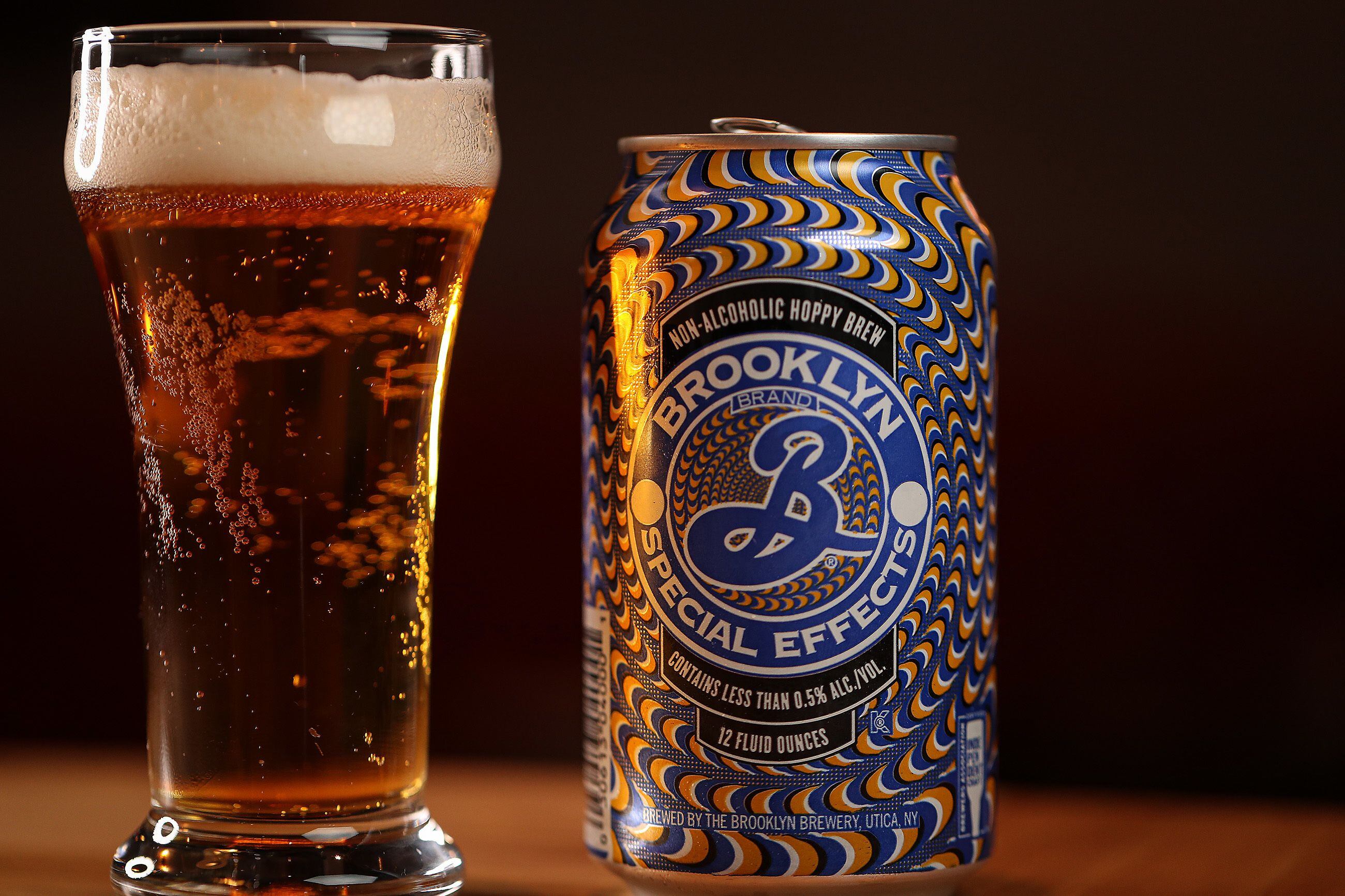Dry January has evolved. Here’s how (and where) to make the most of it in Philly.
Gone are the days of absurdly garnished, overly sweet mocktail monstrosities.

By now, most everyone has heard of Dry January, the monthlong period of abstinence from alcohol that follows the booze-soaked holiday season. While it started in the U.K. in 2013, in the past five years the idea has made its way around the world.
I am something of a Dry January expert, having successfully completed the challenge several times. It’s a useful experiment and tool for assessing the role alcohol plays in your life. Not only does it give your liver a break and possibly help reboot your gut bacteria, it also can lead to a more mindful relationship with alcohol: One study of 900 Dry January participants found that 71% of them reduced binge-drinking episodes going forward.
But I know that most people, myself included, have approached Dry January from the wrong angle at least once. During my first attempts, I would spend the month isolated at home, declining invitations to happy hour and avoiding situations where others would be imbibing.
Back then, I felt awkward meeting friends at the bar, drinking seltzer out of a pint glass. Being handed a wine list at a restaurant was a reminder of what I was missing.
Until very recently, few places in Philadelphia put much thought into a nonalcoholic drinks list. I was accustomed to being told “Coke” or “orange juice” when I sheepishly asked what, if any, zero-proof options a place had. Most embarrassing of all was when a bartender offered to improvise a mocktail on the spot, sitting an absurdly garnished, overly sweet monstrosity of mixed whatever before me.
But in recent years I’ve become far from alone in my choice to give alcohol the boot. Americans’ alcohol consumption has been declining since 2016, prompting beverage-making juggernauts like Anheuser-Busch InBev and Molson Coors to diversify their portfolios with kombucha and coffee drinks. The decline in drinking has been especially pronounced in younger generations.
The rise of the so-called “sober curious” movement, paired with an explosion of high-end nonalcoholic options (including Seedlip, the world’s first nonalcoholic distilled spirit, and Proteau, a nonalcoholic aperitif-type drink), has put some much-needed pressure on hospitality pros to do better. Increasingly, bartenders and beverage directors around the Philadelphia area are rising to the challenge.
Here are some of the best spots to sample some on-trend nonalcoholic drinks.
Forsythia
Bar manager Jennifer Camela has created a beverage program with unusually thoughtful and food-friendly nonalcoholic options. Don’t sleep on the Seedlip cocktails, including the Green Goddess, which uses Seedlip’s herbaceous Garden spirit, and Le Nuage, which incorporates Seedlip’s Grove 42, which has a citrusy flavor and aroma. Locally made Baba’s Brew Kombucha on draft is another winning option.
The Royal Tavern
When Royal Tavern reopened its doors in late November after a longer-than-expected renovation, the Bella Vista bar had refreshed its drinks menu as well, adding a dedicated zero-proof section. Run Wild IPA, a craft nonalcoholic beer brewed in Connecticut by Athletic Brewing, is a dead ringer for “real” craft beer. Also delicious: the Sits Easy mocktail, based on chamomile tea, coconut nectar, and citrus.
Farm & Fisherman Tavern
The two locations of Farm & Fisherman Tavern (Horsham and Cherry Hill) have extraordinarily good options for those eschewing alcohol. They’re among the few places to get a taste of Brooklyn Brewery’s outstanding Special Effects, a nonalcoholic hoppy lager. Farm & Fisherman Tavern also ferments its own kombucha and spicy ginger beer.
Spice Finch
In Rittenhouse, Spice Finch has been a reliable source for strong alcohol-free options since its opening in mid-2018. “The N/A Groni, a mix of [Italian sodas] Chinnoto and Sanbitter, really does taste like a negroni,” says bar manager Frank Pusateri. “That’s my own Dry January go-to.”
Benjamin Menk, front-of-house manager at Farm & Fisherman Tavern believes that having a robust selection of craft nonalcoholic options makes the tavern more accessible to everyone during Dry January and every month of the year. “More information is surfacing about the effects of alcohol in general, which is leading to everyone considering more nonalcoholic options,” he says.
Today, you can sip cocktails made from Seedlip at Forsythia, cleverly crafted elixirs based on verjus (unripe grape juice) at Zahav, or a foamy pint of Brooklyn Brewery’s first nonalcoholic beer at Farm & Fisherman. With any of these, your tippling companions would never know you were skipping the booze unless they’d given the menu a very close read. Thankfully, it’s a much more comfortable time to be at the bar as nondrinker in 2020 than it was in 2017.
Which means that Dry January participants do not need to hide at home, as I once did. Sitting out your social life to avoid alcohol will have some benefits, but you’ll miss out on the most important perk — relearning how to have fun at the bar or in social situations without alcohol.
The magic of Dry January is how it can rewire your brain. Maybe you’ve heard the expression “neurons that wire together fire together.” What that means is when you arrive at a bar and hear the percussive music of cocktail shakers, the din of voices, the smell of fried snacks, you associate this sensory experience with the powerful dose of dopamine alcohol delivers, because these have been long paired.
When you practice having this experience without the booze, over time, you break the link between the environment and alcohol. You’re making new neural pathways, freeing yourself from the knee-jerk craving for a negroni.
This rewiring of my brain allowed me to move from automatically ordering an alcoholic drink at a bar to asking myself, “Do I feel like having alcohol right now?” Increasingly, my answer was no. At the end of Dry January 2017, I didn’t start drinking again. I’ve been alcohol-free for three years. This was possible, in large part, because of those later Dry Januarys, when I learned how to go out and enjoy myself, even in bars and restaurants, without a buzz. Being able to toast with an equally delicious nonalcoholic drink really helped, too.
To get the most out of your month of sobriety, don’t hide away at home. When you use Dry January as a chance to explore a different side of the city’s bar scene, you’ll likely find at least one zero-proof drink you like just as much as your usual by the 31st.
